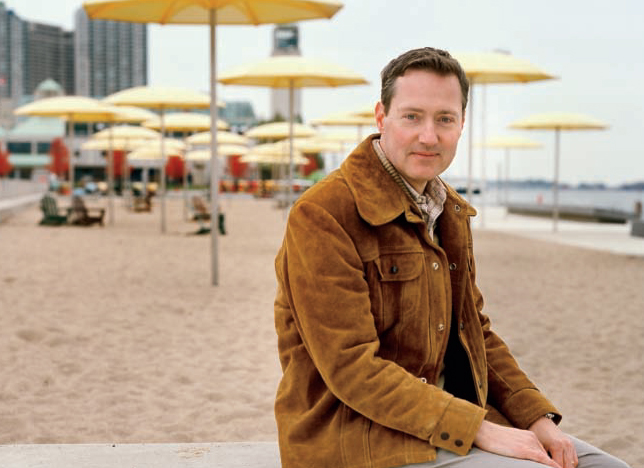One could say that cities are haunted by two species of ghosts: those of the structures that were demolished and are forever gone; and those of unrealized civic dreams – plans that could have altered a city’s destiny but never came to fruition.
Government lawyer Mark Osbaldeston (BA 1990 St. Michael’s) has made it his business to track down the latter, exhuming the dusty reports and frayed architectural renderings that posit alternate futures for the City of Toronto. His first book, Unbuilt Toronto: A History of the City That Might Have Been (Dundurn Press), gathers up all these lofty ambitions and holds up a mirror to the city we have. “Toronto,” he observes, “is the result of so many choices, and those choices are still being made.”
Osbaldeston’s fascination with this shadow city began when he was a reporter for The Mike, during his undergraduate studies in history and English. In the student newspaper’s cluttered office, he found a 1929 fundraising pamphlet that called for a vast new complex for St. Mike’s extending from Queen’s Park Crescent to Bay Street. “Obviously,” he says, “it didn’t get built.” But the discovery ignited something in him, and Osbaldeston, 42, began collecting other examples.
Unbuilt Toronto includes categories such as transportation, government and religious buildings, towers and master plans. The collection includes everything from John Howard’s Walks and Garden’s trust, unveiled in the 1850s, to Buckminster Fuller’s futuristic waterfront pyramids and the losing bids for the Royal Ontario Museum. Selections are featured in an exhibition at the ROM until January 11.
Osbaldeston’s book also focuses on the legacies of the 1911 and 1929 civic plans for the downtown, and the long-running debates over the fate of iconic buildings such as Union Station and E.J. Lennox’s brooding old City Hall. He reminds us that in the early 20th century planners wanted a new civic square, next to Lennox’s City Hall, to be at the northern terminus of a grand boulevard beginning at Union Station. “You realize Union Station was built where it was in anticipation of this square,” says Osbaldeston. But that road – Federal Avenue – was never built as council whittled away the costly parts of those early plans.
Unbuilt Toronto isn’t an exercise in uncritical nostalgia. Osbaldeston’s examples include monstrosities such as Metro Centre, a dense collection of highrises dreamed up for the railway lands, as well as the pre-Eb Zeidler vision for the Eaton Centre – both of which were defeated by public opposition. As he says, “It seems like with half of these plans we dodged the bullet.”






